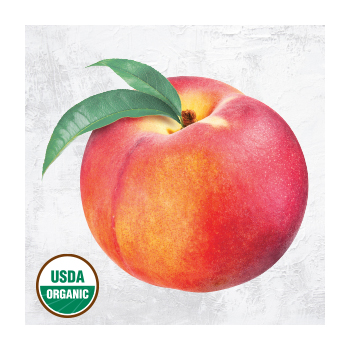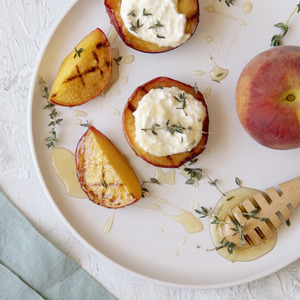


Sign-up for {N}power to get exclusive discounts, newsletters, members-only features, and more!

With all the sweetness and beauty peaches bring us in the summer months, it’s no wonder artists from Monet to Van Gogh, poets galore, and even Justin Bieber have been inspired by this beloved fruit with a treasure trove of health benefits!

O, to take what we love inside, to carry within us an orchard, to eat not only the skin, but the shade, not only the sugar, but the days, to hold the fruit in our hands, adore it, then bite into the round jubilance of peach.—Excerpted from "From Blossoms”
by Li-Young Lee1
Though the summer season always seems to pass too quickly, let the world slow down a little, bask in the glorious juiciness of a peach in every recipe you can sneak it into—your body will surely thank you. Peaches are a great source of vitamins A and C and the carotenoid antioxidants lutein and beta carotene. These nutrients support your eye health, immune system, and keep your skin healthy and glowing. These delicious fruits are also an excellent source of polyphenols that help protect the body from the everyday stressors that cause oxidative damage in our bodies.2 3 4 Many of the juicy benefits are most concentrated in peach skins—as much as double the amount of polyphenols can be found in the skins as opposed to the flesh—so it’s best to eat the skin along with the juicy flesh, and always choose organic peaches without residues to keep the benefits in, and the pesticides out!5
Is there anything that could take away from the sweetness of a perfectly ripe peach? Only the bitter fact that peaches are a regular on the Environmental Working Group’s (EWG) Dirty Dozen list.6 Conventional peaches are notoriously coated in a number of different pesticide residues, including insecticides and fungicides.7 As a much-loved staple in baby foods, a study was conducted to determine how much pesticide residue is in peach purées used in baby food after processing. Though some residues were mostly removed by washing and peeling, researchers found that vinclozolin and procymidone, known endocrine disruptors, could not be removed, and were in fact increased in the purée. These fungicides have antiandrogenic action, which means they stop the androgen hormones, such as testosterone, from binding with its receptors, interfering with bone and muscle development, fertility, and healthy hormone function.8 Whether fresh, frozen, or preserved, always choose organic to protect you and your little ones from nasty pesticide residues!
Peach blossoms bloom into golden fruits, hanging heavy in rows in orchards vibrant with life. Birds and bees float from tree to tree, pollinating, perching, and perhaps taking the occasional bite of aromatic peach. We’re not the only species with a love of peaches! The fungicide vinclozolin that’s harmful to the human endocrine system can also harm birds and their reproductive cycles—birds who dwell around conventional peach orchards are at risk.9 10 Bees and other pollinators of this sweet stone-fruit are also at risk of harm due to the use of neonicotinoids such as dinotefuran, an insecticide that has been shown to lead to a decline in honeybee populations.11 Studies have shown organic farming increases biodiversity, has a lower carbon footprint, and even produces more nutrient-dense crops.12 Choosing organic helps to protect us, and all the creatures who inhabit these poetically beautiful peach orchards.
 Grilled Peaches with Honey-Thyme Drizzle Recipe
Grilled Peaches with Honey-Thyme Drizzle RecipeQuick and easy for any time, yet elegant enough for a special occasion, these scrumptious grilled peaches are a must-try.
GET THE RECIPE


Sign-up for {N}power to get exclusive discounts, newsletters, members-only features, and more!